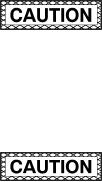
TM 1-1510-262-10
8-52. DESERT OPERATION AND HOT WEATHER OPERATION.
Dust, sand, and high temperatures encountered during desert operation can sharply reduce the operational life of
the aircraft and its equipment. The abrasive characteristics of dust and sand upon turbine blades and other moving
parts of the aircraft and the destructive effect of heat upon the aircraft instruments will necessitate many hours of
maintenance if basic preventive measures are not followed. In light, the hazards of dust and sand will be dificult to
escape, since dust clouds over a desert may be found at altitudes up to 10,000 feet. During hot weather operations,
the principal dificulties encountered are high turbine gas temperatures (TGT) during engine starting, over-heating
of brakes, and longer takeoff and landing distances due to the higher density altitudes encountered. In areas where
high humidity is encountered, electrical equipment (such as communication equipment and instruments) will be sub-
ject to malfunction by corrosion, fungi, and moisture absorption by nonmetallic materials.
a. Preparation for Flight. Check the position of the aircraft in relation to other aircraft. Propeller blown sand
can damage nearby aircraft. Check that the landing gear shock struts are free of dust and sand. Check the instru-
ment panel and general interior for dust and sand accumulation. Open main entrance door and cockpit vent storm
windows to ventilate the aircraft.
b. Engine Starting. Use normal procedures in Section II. Engine starting under conditions of high ambient tem-
peratures may produce a higher than normal TGT during the start. Closely monitor TGT when the CONDITION lever
is moved to the LOW IDLE position. If over temperature tendencies are encountered, periodically move CONDI-
TION lever to IDLE CUTOFF position periodically during acceleration of gas generator RPM (N 1 ). Be prepared to
abort the start before temperature limitations are exceeded.
c. Warm-Up Ground Tests. Use normal procedures in Section II.
d. Taxiing. Use normal procedures in Section II. When practical, avoid taxiing over sandy terrain to minimize
propeller damage and engine deterioration that results from impingement of sand and gravel. During hot weather
operation, use minimum braking action to prevent brake over heating.
e. Takeoff. Use normal procedures in Section II. Avoid taking off in the wake of another aircraft if the runway
surface is sandy or dusty.
f. During Flight. Use normal procedures in Section II.
g. Descent. Use normal procedures in Section II.
h. Landing. Use normal procedures in Section II.
i. Engine Shutdown. Use normal procedures in Section II.
If fuel tanks are completely illed during hot weather, fuel expansion may cause overlow, thereby
creating a ire hazard.
j. Before Leaving Aircraft. Use normal procedures in Section II. Take extreme care to prevent sand or dust
from entering the fuel and oil system during servicing. During hot weather, release the brakes immediately after
installing wheel chocks to prevent brake disc warping.
Due to the comparatively light wing loading, aircraft control in severe turbulence and a thunderstorm
are critical. Since turbulence imposes heavy loads on the aircraft structure, make all necessary
changes in aircraft attitude with the least amount of control pressures possible to avoid excessive
loads on the aircraft structure.
8-53. TURBULENCE AND THUNDERSTORM OPERATION.
Thunderstorms and areas of severe turbulence should be avoided. However, if such areas are to be penetrated, it
is necessary to counter rapid changes in attitude and accept major indicated altitude variations. Penetration should
be at an altitude which provides adequate maneuvering margins as a loss or gain of several thousand feet of altitude
may be expected. The recommended speed for penetration of severe turbulence is 150 KIAS. Constant pitch atti-
tude and power settings are vital to proper light technique. Establish recommended penetration speed and proper
attitude prior to entering turbulent air to minimize most dificulties. False indications by the pressure instruments
8-35

